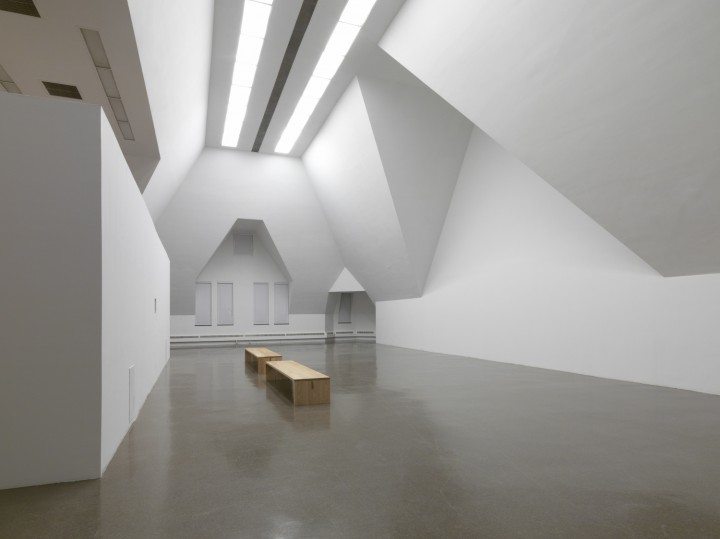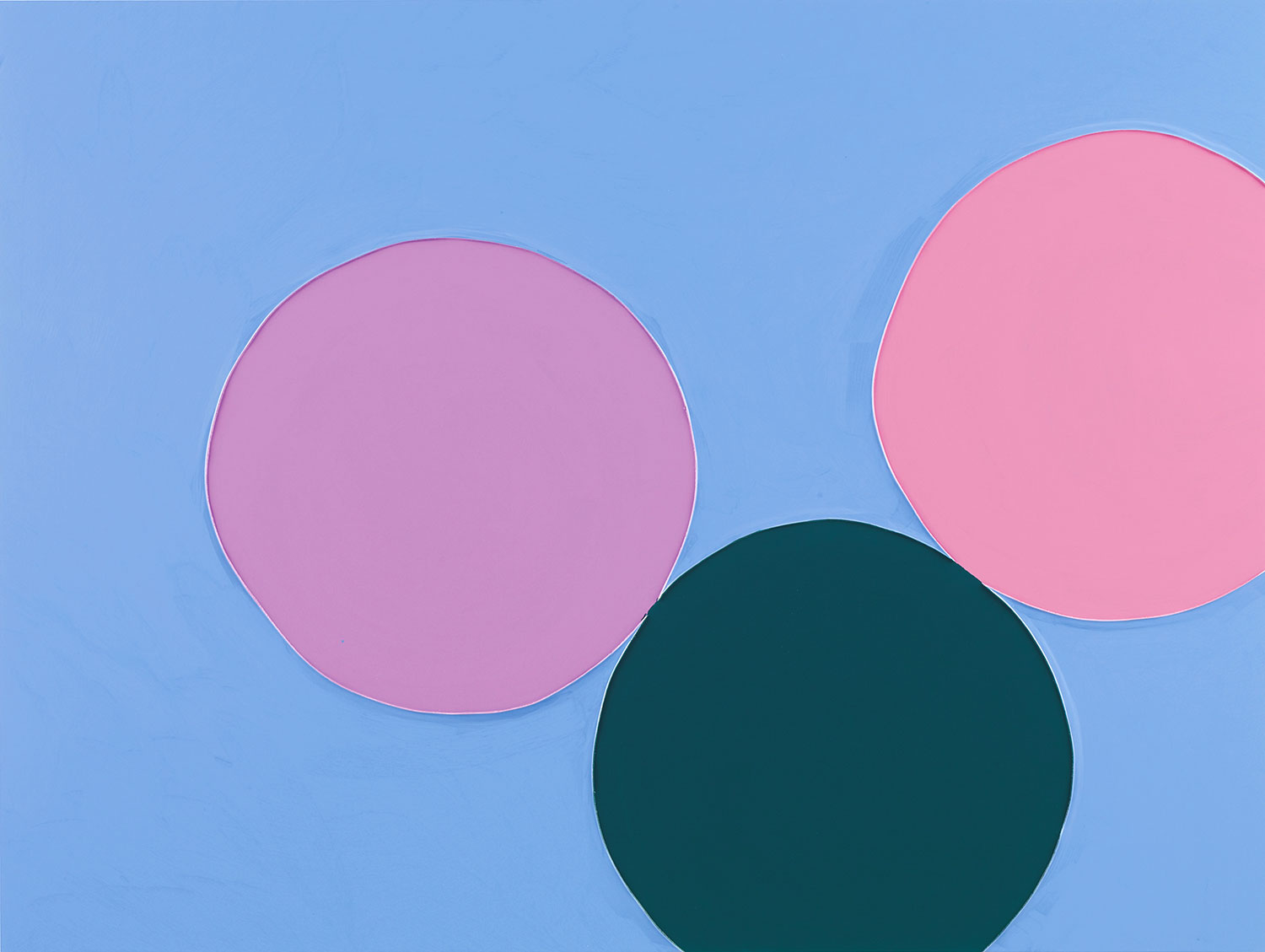Two works — an architectural intervention and a new film — comprise Mathias Poledna’s exhibition at the Renaissance Society. Together, these pieces mark out axes of space and time, along with the mechanisms by which memory is apprehended institutionally and commercially.
At the entrance of the space, Poledna feigns sticking to sedimented concepts of spatiotemporality as a means of stable location: two text panels appear to exhaustively account for the histories and conditions of production by which these works are realized, and that seems to be that. Only latently, then overwhelmingly, does Polenda fold chronologies over on themselves, so that neither architecture nor time management endure amid the abyssal excesses onto which both works open out.
Since the Ren was relocated to its current home in the University of Chicago’s Cobb Hall in 1979, its exhibition space has juggled a mash-up of architectural stylings: the requisite “white cube” interior treatment, vaulted ceilings and shallow alcoves which correspond to the neo-gothic exterior of the building, and a steel truss ceiling grid that horizontally bifurcated the gallery from its sloping heights starting in 1967. For Poledna’s exhibition this latter feature has been totally removed as a permanent re-design of the space, permanently embedding one of his gestures into the institution. Yet, for all of these enduring promises, the cavernous room now looms sublime; one fewer architectural quirk and the whole place unfurls uncertainly.
Likewise, the six-and-a-half-minute film strikes at one myth about time that lasts despite the atemporal throes into which instantaneous global networks have freed us: that time can be commodified, purchased, harnessed into one-minute-or-less television commercials that swell with seduction then subsequent desire (then subsequent loss). Poledna’s commercial runs long, first making softly unfocused passes across the face of a gold-plated Rolex wristwatch before slowly angling around the timepiece as it drifts away into a darkened field. Just four years since the cohesive montage of time in Christian Marclay’s The Clock, Poledna fractures through edits of film clips and architecture. The empty space of the film opens out from the newly emptied gallery, a doubled chasm into which a stabilized historicity’s impossibility is cast.


